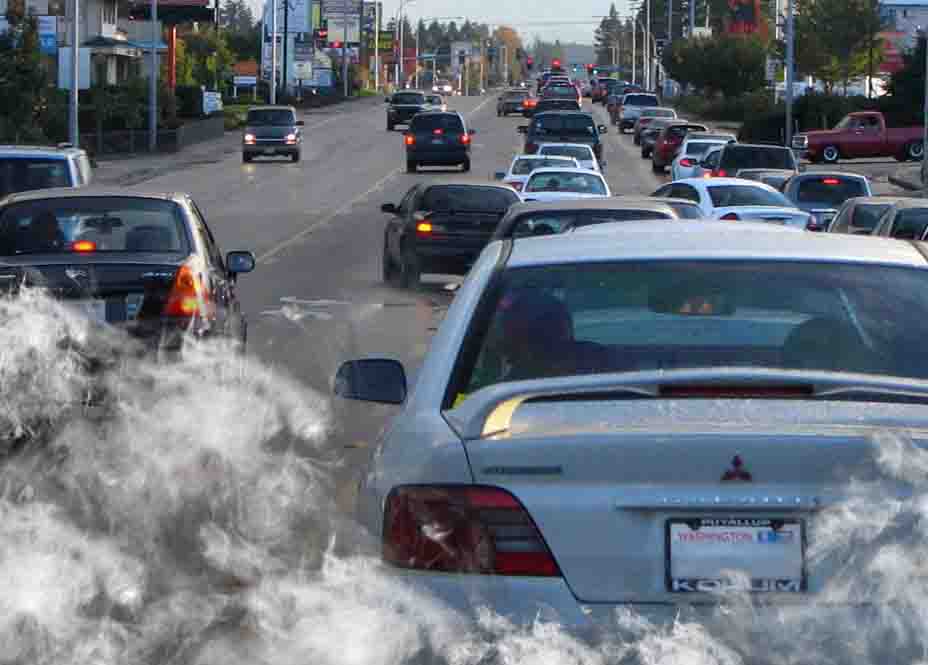- Home
- Feature
- The burning issue of hydrocarbons: Impacts on human health
Feature
The burning issue of hydrocarbons: Impacts on human health

Professor Kazuichi Hayakawa, Division
of Environmental Science and Engineering,
Graduate School of Natural Science and
Technology, Kanazawa University, Japan.
A leading professor has spent his considerable career at Kanazawa University in Japan investigating the toxic by-products of burning fuels, and the associated impacts on human health.
Polycyclic aromatic hydrocarbons (PAHs) and their related molecules, nitropolycyclic aromatic hydrocarbons (NPAHs), are released when fuel – either fossil fuels or biomass – is burnt. They are also present following tobacco and fat combustion. PAHs and NPAHs are known to be highly carcinogenic and mutagenic, meaning they can trigger genetic mutations in living organisms. The impact of these particular molecules on human health is now being uncovered, thanks in no small part to the work of Kazuichi Hayakawa at Kanazawa University.
Hayakawa is highly regarded for his development of an extremely sensitive method of determining NPAH / PAH concentrations in atmospheric particulate samples. His technique uses high performance liquid chromatography with chemiluminescence detection – separating out the chemical components of particulate matter and classifying them according to how they emit light and heat1.
“In the 1970s, there was no analytical method for monitoring trace levels of atmospheric NPAHs, even though the toxicity of NPAHs was very strong,” explains Hayakawa. “My analytical method for determining both PAH and NPAH levels, developed over 20 years ago, remains the most sensitive technique to date.”
Hayakawa discovered that the NPAH/PAH concentration ratio in any given sample is dependent upon the original combustion temperature of the fuel. In this way, airborne particulate samples can be analyzed and the original source of the pollutants can be identified – for example burning coal, diesel or petrol.

Toxic (nitro)polycyclic aromatic hydrocarbons
(PAHs/NPAHs), the by-products from burning
fuels such as diesel, are now known to have
a significant impact on human health.
Current understanding of the nature and
effects of these molecules has been greatly
enhanced by the work of Kazuichi Hayakawa
at Kanazawa University, Japan.
Between 1997 and 2002, Hayakawa led a study of airborne particulates in seven cities across East Asia2. The research revealed that, due to the higher combustion temperature, diesel engine vehicles in Japan released far more PAHs/NPAHs into the atmosphere than coal heating systems, which were predominant in China. In 2013, novel research published by Hayakawa and his team illustrates that motorcycle engines release more particulate matter and higher levels of PAHs than automobile engines3. The same paper shows that motorcycle particulates hold stronger PAH-related mutagenicity than emissions from other vehicles.
As well as studying atmospheric PAHs/NPAHs over recent decades, Hayakawa has been involved in numerous investigations into the effects of these molecules on human health. His team found that NPAHs originating from diesel fuels were implicated in the development of cancerous tissues in the body4. Furthermore, in research published in 2003, they uncovered the role of diesel fuel PAHs in disrupting the testosterone and estrogen effects in men and women, respectively, a condition which can lead to prostate cancer and genetic reproductive disorders5.
“I am currently developing methods to identify metabolites of PAHs and NPAHs in biological samples such as urine and blood,” describes Hayakawa. “These methods will determine the risk of exposure to PAHs and NPAHs.”
Kazuichi Hayakawa’s research will continue to provide insight into environmental pollution across the globe. It will also inform the development of countermeasures that should help to reduce human health risks.
Publication and Affiliation
1. K. Hayakawa et al. Determination of 1,3-, 1,6- and 1,8- dinitropyrenes and 1-nitropyrene in urban air by high-performance liquid chromatography using chemiluminescence detection. Environmental Science and Technology 29 (4) (1995)
2. N. Tang et al. Polycyclic aromatic hydrocarbons and nitropolycyclic aromatic hydrocarbons in urban air particulates and their relationship to emission sources in the Pan–Japan sea countries. Atmospheric Environment 39 (2005)
3. C.T. Pham et al. Polycyclic aromatic hydrocarbons and nitropolycyclic aromatic hydrocarbons in particulates emitted by motorcycles. Environmental Pollution 183 (2013)
4. M. Iwanari et al. Induction of CYP1A1, CYP1A2, and CYP1B1 mRNAs by nitropolycyclic aromatic hydrocarbons in various human tissue-derived cells: chemical-, cytochrome P450 isoform-, and cell-specific differences. Arch Toxicology 76 (2002)
5. R. Kizu et al. A role of aryl hydrocarbon receptor in the antiandrogenic effects of polycyclic aromatic hydrocarbons in LNCaP human prostate carcinoma cells. Arch Toxicology 77 (2003)
*corresponding author, e-mail address: hayakawa@p.kanazawa-u.ac.jp
ID: 201404F005
